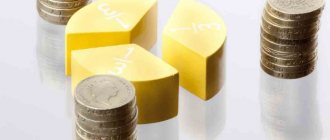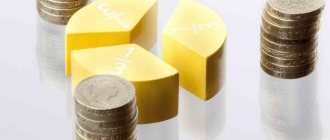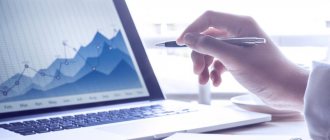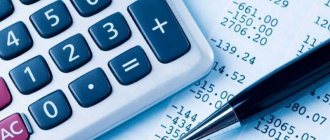Composition of tangible assets
According to the uniform rules for accounting in Russian organizations, tangible assets are usually divided into two categories.
Some categories are quite rare in practice. For example, these are search assets. But fixed assets, inventories and cash are the most common items. Without such facilities, conducting business is almost impossible.
| Non-negotiable | Negotiable |
| These are all types of assets of an economic entity that are used to carry out activities for more than one calendar year. Examples of objects can be buildings and structures, cars and other equipment, machines and equipment, and software. | These are those objects that are directly involved in the production cycle, but their full turnover (use) period is less than a year. Examples of such objects are raw materials and supplies, fuel and lubricants and spare parts, finished products and goods. |
Composition of non-current assets:
| Composition of current assets:
|
Assets and liabilities: brief description
Ordinary citizens are often interested in what an asset and a liability mean. Every financier understands that the participation of these two elements in any enterprise is continuous. In some cases, only their composition and form of value may change.
If a person is encountering these concepts for the first time, then first he needs to study balance in detail. And all because in domestic accounting practice, without capital, liabilities and assets cannot be generalized in monetary terms. The financial balance sheet is usually understood as the financial position of the company at a specific reporting date. Without this data it is simply impossible to create correct documentation.
The balance of liabilities and assets is usually called planned. Its correct preparation is based on the use of existing indicators of income and expenses of the enterprise, the feasibility of spending investment funds. When a specialist needs to draw up a balance, he initially proceeds to the following tasks:
- Conducts a routine calculation of the company's creditworthiness and checks the impact of the obtained figures on the balance sheet.
- Forms high marketability of the organization and corresponding warranty obligations.
- Draws up a professional justification for the capitalization of the enterprise and the growth of its market valuation.
In other words, a company's balance sheet is the key place to store assets and liabilities. All data is reflected in a special table, which is very convenient for routine checking.
It would not be amiss to note that assets are always indicated on the left in the document, and liabilities on the right. As a result, the total amount of financial data is recorded.
How to keep records of tangible assets
Math assets are reflected in accounting accounts in accordance with their category. For example, fixed assets should be attributed to account 01 of the same name. In the public sector - 0 101 00 000. Inventory in non-profit organizations should be reflected on account 10, and, for example, in a budgetary institution - on account 0 105 00 000. Record the company's cash in the cash register on accounting account 50, on current accounts - 51. State employees register transactions with money in the group of accounts 0 201 00 000.
Accounts for recording tangible assets are active. That is, the receipt of material objects can only be reflected in the debit of the corresponding account. The disposal of objects is reflected in the turnover on the credit of accounting accounts.
IMPORTANT!
Active accounts cannot have a credit balance at the end of the period. The value is either positive or zero!
If, during the formation of accounting registers for one of the accounting accounts for the accounting of physical assets, a credit (negative) balance is identified, then most likely there is an error in the accounting. It is necessary to check whether the postings are made correctly.
What are biological assets
This term was not used in domestic accounting policies, but it is actively used in international financial standards. Their harmonization is extremely important in the light of modern globalization processes.
International Standard IAS 41 Agriculture defines Biological assets very simply: living plants and animals. However, not every plant and animal can be recognized as a business asset; clarification is obviously necessary.
Biological assets are living beings (animals, birds, etc.) and plants that are the object of profit in the agricultural business.
NOTE! Financial accounting of biological assets is carried out exclusively according to the international standard IFRS, namely IAS 41
How the value of tangible assets is formed
The procedure for forming the value of material objects is fixed by Order of the Ministry of Finance No. 34n. The tangible assets of an enterprise should be assessed depending on the method of their receipt by the company. Common methods:
- Acquisition of an object using the organization’s own funds. The cost of material assets is formed as a combination of all types of costs associated with the supply, delivery, setup and installation of the purchased object.
- Free access to property. If a material asset is transferred into the ownership of an organization free of charge, then its value is determined based on market price indicators. Moreover, the market value is assessed as of the date of receipt.
- Independent production of material assets. The cost is formed in this case as the totality of the company’s expenses incurred for the production of valuables. That is, the cost of releasing the finished product is taken into account.
Some companies have the right to use other methods for determining the value of asset assets. For example, determine indicators using the reservation method. But the approach is available if it is permitted by the current legislation of the Russian Federation.
When is a living thing recognized as an asset?
Living plants and animals differ from the items that constitute non-biological assets in many ways. We consider the characteristics by which they differ precisely as assets, that is, methods of legally permitted extraction of profit. Profit from the use of a biological asset can be obtained as a result of:
- biotransformation process (breeding, growing);
- exploitation (draft animals, milking, laying hens, etc.).
ATTENTION! Both types of profit from a bioactive most often overlap: for example, draft animals also need to be restocked. A company must recognize an asset as a biological one and report it in its financial statements if:
A company must recognize an asset as a biological one and report it in its financial statements if:
- the entity's control over the asset is achieved as a result of its past actions or events;
- this asset is likely to bring economic benefits;
- it is possible to more or less reliably determine the fair value of an asset.
Typical accounting entries
Keep records of material assets in a non-profit organization in accordance with Order of the Ministry of Finance No. 94n. Reflect transactions in accounting using the following entries:
| Operation | Debit | Credit |
| Equipment for main production was purchased by NPOs for a fee | 08 | 60 |
| VAT is reflected as part of the cost of the purchased fixed asset item | 19 | 60 |
| The initial cost of purchased equipment has been formed | 01 | 08 |
| Reflects the costs of non-profit organizations for the modernization of fixed assets | 08 | 69, 70, 10 |
| The organization purchased raw materials and supplies for a fee | 10 | 60 |
| VAT is allocated from the cost of purchased raw materials | 19 | 60 |
Accounting in public sector institutions should be maintained in accordance with Instruction No. 157. Individual recommendations of the Ministry of Finance must be taken into account depending on the type of institution (budgetary, state-owned or autonomous). Let's define typical entries in the accounting of a budgetary organization using the example of the purchase of raw materials.
| Operation | Debit | Credit |
| The inventory supplier has delivered raw materials | 0 105 XX 340 | 0 302 34 730 |
| The amount of input VAT is reflected | 0 210 12 560 | 0 302 34 730 |
| The government agency transferred payment for raw materials to the supplier | 0 302 34 830 | 0 201 11 610 |
| Value added tax was accepted for deduction by the budgetary institution | 0 303 04 831 | 0 210 12 660 |
What are non-produced assets
Non-produced assets are items that are involved in the production process but are not considered products of production. Another characteristic of these assets is the existence of ownership rights to them. The company must have documents confirming ownership. The most common examples of non-produced assets are land and natural resources. Let's consider objects that can be classified as NA:
- Tangible assets that have ownership rights.
- Intangible assets expressed in the form of objects of social order.
If a company does not have ownership of an item, it cannot be considered an asset. In most cases, non-produced assets are land and its components that cannot be separated. The latter include:
- Buildings, roads, tunnels.
- Plantations and areas for animal breeding.
- Bosom.
- Uncultivated resources.
- Water resources located underground.
The following conditions are typical for NA objects:
- Possibility of evaluation (determining value).
- Status of the object of sale and purchase or the object of other economic agreements.
- Possibility of commissioning.
- Status as a source of financial benefits.
Non-produced assets are not the product of employee activities. This is one of the basic characteristics of the assets in question. Paragraph 70 of Instruction No. 157n indicates that ownership rights to assets are secured in a special manner. As a rule, non-financial objects are in the company with operational management rights. An exception is land for which operational management cannot be established.
IMPORTANT! NAs are taken into account only at the moment they begin to be used in circulation. It is assumed that assets are recorded in accounting registers only when they are sold or acquired, placed under operational management or otherwise involved
The main condition for use is to derive benefits.
Reflection in the balance sheet
To correctly reflect tangible assets on the balance sheet, when preparing the main financial statement, consider the following:
- Data on balances of physical assets at reporting dates are reflected on the left side of the balance sheet. Since this type of object refers to the assets of the enterprise.
- Enter information into reporting form No. 1 based on data from the accounting registers as of the corresponding date. That is, at the beginning and end of the reporting period.
- Detail numerical indicators by asset category. That is, indicate one category of mathematical assets in the corresponding line of the balance sheet:
- p. 1140 - reflect material search objects;
- page 1150 - include information about fixed assets objects formed as of the reporting date;
- page 1160 - include in the balance sheet the amounts allocated to investments in material assets;
- p. 1190 - record other types of SAI;
- page 1210 - disclose information about the cost of goods and materials and inventories as of reporting dates;
- p. 1260 - detail other types of OA.
Family budget: application of assets and liabilities
The theory of accounting fundamentals will be useful for both business representatives and ordinary people who have saved money and are engaged in housekeeping. The categories of assets and liabilities are also applicable in personal or family budgeting. A person who is well versed in the basic parameters of these terms will be able to rationally form and distribute available funds.
Citizens striving for entrepreneurship and independence prefer to avoid any mistakes in the process of starting a business. Understanding the essence of assets and liabilities will definitely come in handy here. To manage household capital, it is recommended to use a classic, but slightly adapted approach .
Assets are everything that a person has. Then it doesn’t matter at all how the savings are disposed of—whether the funds are spent or whether they make a profit. But liabilities are presented in the form of obligations. Liabilities include not only tax payments to the state, but also retained earnings. Success can only be achieved when every nuance is taken into account.
It is worth noting that there is no profit distribution in this case, since income is converted into assets. Savings accumulated over many years are considered capital.
To make it easier to achieve the desired result, it is convenient to maintain a household budget in the form of a balance sheet. The data for “Assets” will differ significantly from “Liabilities”. Then there will be no confusion.
It is worth noting that assets include objects or items that are available in real time. Such assets include material assets, goods or documents. Liabilities are a more abstract category (unpaid bills, accumulated debts, profits accumulated over time). All liabilities are documented or simply on paper, for memory, but do not have material expression.
Monetary balance
Experts assure that assets contribute to achieving a certain financial freedom, which is the dream of any person. To achieve such a result, it is necessary to take into account every nuance in order to be confident in the state of the budget. If you decide to acquire assets, you shouldn’t expect them to bring big profits from the first day. For assets to earn money, a certain period must pass.
It is irrational to stop at the initial stage. If a person owns only one asset, for example, employment, and the number of liabilities is excessive (loans, obligations, debts), then an urgent need to reconsider all his actions. The budget must be constructed in such a way as to achieve a balance and then a reduction in liabilities in the shortest possible time. Then financial freedom will come. Otherwise, the scenario will be closed in a circle: everything you earn is what you spend. Moreover, liabilities may increase.
You need to take a balanced approach to acquiring assets. Carefully consider new opportunities as a source of budget replenishment. If you move consistently and do not deviate from the intended path, then accounting will definitely give a positive result.








